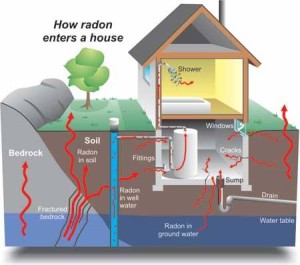 MYTH 1: Scientists are not sure that radon really is a problem
MYTH 1: Scientists are not sure that radon really is a problem
FACT: Although some scientists dispute the precise number of deaths due to radon, all the major health organizations (like the Centers for Disease Control, the American Lung Association, and the American Medical Association) agree with estimates that radon causes thousands of preventable lung cancer deaths every year. This is especially true among smokers, since the risk to smokers is much greater than to non-smokers
MYTH 2: Radon testing devices are not reliable and are difficult to find
FACT: Reliable radon tests are available from qualified radon testers and companies. Active radon devices can continuously gather and periodically record radon levels to reveal any unusual swings in the radon level during the test. Reliable testing devices are also available by phone or mail-order, and can be purchased in hardware stores and other retail outlets. Call your state radon office for a list of qualified radon test companies
MYTH 3: Radon testing is difficult and time-consuming
FACT: Radon testing is easy. You can test your home yourself or hire a qualified radon test company. Either approach takes only a small amount of time and effort.
MYTH 4: Homes with radon problems cannot be fixed
FACT: There are solutions to radon problems in homes. Thousands of home owners have already lowered their radon levels. Radon levels can be readily lowered for between $800 and $2,500. Call your state radon office for a list of qualified mitigation contractors.
MYTH 5: Radon only affects certain types of homes
FACT: Radon can be a problem in all types of homes, including old homes, new homes, drafty homes, insulated homes, homes with basements, and homes without basements. Local geology, construction materials, and how the home was built are among the factors that can affect radon levels in homes
MYTH 6: Radon is only a problem in certain parts of the country
FACT: High radon levels have been found in every state. Radon problems do vary from area to area, but the only way to know a homes’ radon level is to test
MYTH 7: A neighbors’ test result is a good indication of whether your home has a radon problem It is not.
FACT: Radon levels vary from home to home. The only way to know if your home has a radon problem is to test it.
MYTH 8: Everyone should test their water for radon.
While radon gets into some homes through the water, it is important to first test the air in the home for radon. If your water comes from a public water system that uses ground water, call your water supplier. If high radon levels are found and the home has a private well, call the Safe Drinking Water Hotline at (800) 426-4791 for information on testing your water. Also, call your state radon office for more information about radon in air.
MYTH 9: It is difficult to sell a home where radon problems have been discovered
FACT: Where radon problems have been fixed, home sales have not been blocked. The added protection will be a good selling point
MYTH 10: I have lived in my home for so long, it does not make sense to take action now.
You will reduce your risk of lung cancer when you reduce radon levels, even if you have lived with an elevated radon level for a long time.
MYTH 11: Short-term tests cannot be used for making a decision about whether to reduce the homes high radon levels
FACT: Short-term tests can be used to decide whether to reduce the homes high radon levels. However, the closer the short-term testing result is to 4 pCi/L, the less certainty there is about whether the homes year-round average is above or below that level. Keep in mind that radon levels below 4 pCi/L still pose some risk and that radon levels can be reduced to 2 pCi/L or below in most homes
